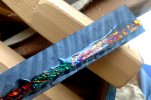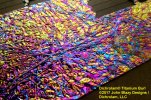kuraki
Fimbulvetr Knifeworks
- Joined
- Jun 17, 2016
- Messages
- 4,679
The BladeForums.com 2024 Traditional Knife is ready to order! See this thread for details:
https://www.bladeforums.com/threads/bladeforums-2024-traditional-knife.2003187/
Price is $300 $250 ea (shipped within CONUS). If you live outside the US, I will contact you after your order for extra shipping charges.
Order here: https://www.bladeforums.com/help/2024-traditional/ - Order as many as you like, we have plenty.
The problem we will run into with interrupting the pattern is depending on the knife in question, or the maker, the depth he's going to contour the handle to from the original face.
Very true.Another point that is absolutely crucial is the lack of voids. Air bubbles and voids will quickly render an expensive handle material worthless, and usually at the point of approaching the final stages of making a knife - that creates a LOT of stress and work, and commences The Sadness.
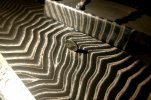
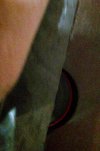
I had my laminating ovens custom made to handle 4.5 x 11.5 ft sheets, so if I get enough orders from the guitar builders, and maybe wholesale to knife supply (or just you guys), then 5 x 12 in 1/8" and 3/16" won't be a problem. Just need to figure out an efficient and safe surface grinding method. Right now these tests are in my flame / curly mold which is 8" x 26". Working on a CAD drawing right now for a "micro-quillt", which is a tighter version of my big 33 x 57" quilt mold. I should be able to press that mold into solid CF, and show the quilted figure well. Will look a bit like Timascus in its pattern. Might call it Blazascus (NOT!!)mmmm , would love that stuff in 1/8" thick or 3/16" thick in a 5" x 12" sheet size
This is very cool. I also think that it will make a great-looking synthetic abalone substitute, with even brighter colors than the natural. Looks very visually dominant, but I bet it would make killer accent material- think pocket clips and backspacers.
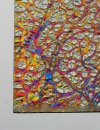
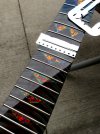
Yeah, well you just described my other product - Dichrolam. Used to make it in glass, but now acrylic and epoxy resins. Acrylic, because it buffs to high gloss, and epoxy for lower expansion / contraction. This stuff will be in the sample kits as well. Looks a bit like Timascus (obviously) but is less expensive and machines with a "lens" effect when polished with roundovers. Left edge of this photo is polished with a 1/8" radius "teardrop" edge. This is a photo of "White Burl", a little different than the "Fire Burl" in my opening post. I think the real potential is in the figured CF material. However, you should see my Dichrolam "Burls" inlayed into the figured CF. Might be a match made in heaven for you guys. Thats were my epoxy version comes in - it can be inlayed right into the CF.
View attachment 794845
View attachment 794847
Red Burl inlays cast into the figured (not solid) curly CF.
